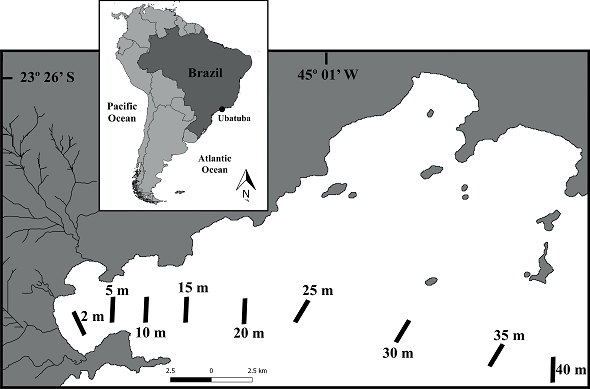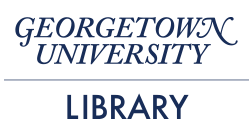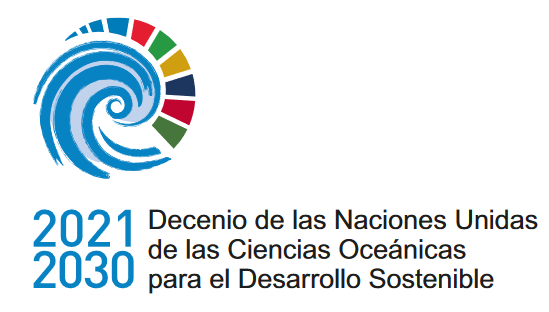Crecimiento, longevidad y mortalidad de los camarones rosados Farfantepenaeus brasiliensis y F. paulensis en el sureste de Brasil
DOI:
https://doi.org/10.47193/mafis.3522022010503Palabras clave:
Pesquería artesanal, Bertalanffy, Cierre de temporada, Tasa de explotación, PenaeidaeResumen
El estudio estimó los parámetros de crecimiento, longevidad, mortalidad por pesca (F), mortalidad natural (M) y mortalidad total (Z) y las tasas de explotación (E) de los camarones Farfantepenaeus brasiliensis y F. paulensis muestreados en la Bahía de Ubatuba de Enero a Diciembre de 2000. Los camarones fueron identificados por especie, sexados y medidos (longitud del caparazón – CL en mm). En total, se analizaron 1.231 individuos de F. brasiliensis y 687 de F. paulensis. La talla media entre sexos no difirió para ambas especies. Los parámetros estimados de F. brasiliensis fueron: CL∞= 41,08 mm, k = 2,41 año-1 para machos y CL∞= 47,32 mm, k = 2,23 año-1 para hembras; longevidad de 1,91 años (machos) y 2,05 años (hembras); M de 2,47 (machos) y 2,28 (hembras); F de 7,97 (machos) y 8,42 (hembras). Para F. paulensis se observaron los siguientes valores: CL∞= 36,55 mm, k = 2,41 año-1 para machos y CL∞ = 49,24 mm, k = 2,51 año-1 para hembras; longevidad de 1,91 años (machos) y 1,81 años (hembras); M de 2,52 (machos) y 2,52 (hembras); F de 7,64 (machos) y 10,25 (hembras). Los altos valores de k y F encontrados para ambas especies en comparación con los de de la literatura reflejaron los altos valores de E, lo que indica que en ese momento la temporada de veda todavía no era responsable de la recuperación del stock. Resaltamos la necesidad de estudios que evalúen el estado actual de los stocks para que puedan ser comparados con los resultados aquí encontrados.
Descargas
Métricas
Citas
ALFORD RA, JACKSON GD. 1993. Do cephalopods and larvae of other taxa grew asymptotically? Am. Nat. 141 (5): 717–728. DOI: https://doi.org/10.1086/285501
BARIOTO JG, STANSKI G, GRABOWSKI RC, COSTA RC, CASTILHO AL. 2017. Ecological distribution of Penaeus schmitti (Dendrobranchiata: Penaeidae) juveniles and adults on the southern coast of São Paulo state, Brazil. Mar Biol Res. 13 (6): 693–703. DOI: https://doi.org/10.1080/17451000.2017.1287923
BAUER RT. 2010. Chemical Communication in Decapod Shrimps: The Influence of Mating and Social Systems on the Relative Importance of Olfactory and Contact Pheromones. In: Breithaupt T, Thiel M, editors. Chemical Communication in Crustaceans. Springer, New York, NY. DOI: https://doi.org/10.1007/978-0-387-77101-4_14.
BRANCO JO, LUNARDON-BRANCO MJ, FINIS A. 1994. Crescimento de Xiphopenaeus kroyeri (Heller, 1862) (Crustacea: Natantia: Penaeidae) da região de Matinhos, Paraná, Brasil. Arch Biol Technol. 37 (1): 1-8.
CARVALHO C, OSHIRO LMY, KEUNECKE KA. 2021. Growth and mortality analyses of the white shrimp Penaeus schmitti (Decapoda: Penaeidae) in Sepetiba Bay, Brazil: An exploited data-deficient species. Reg Stud Mar Sci. 42: 101641. DOI: https://doi.org/10.1016/j.rsma. 2021.101641
CASTILHO AL, BAUER RT, FREIRE FAM, FRANSOZO V, COSTA RC, GRABOWSKI RC, FRANSOZO A. 2015. Lifespan and reproductive dynamics of the commercially important sea bob shrimp Xiphopenaeus kroyeri (Penaeoidea): synthesis of a 5-year study. J Crust Biol. 35 (1): 30-40. DOI: https://doi.org/10.1163/1937240X-00002300
CASTRO-FILHO BM, MIRANDA LB, MYAO SY. 1987. Condições hidrográficas na plataforma continental ao largo de Ubatuba: variações sazonais e em média escala. Bolm Inst Oceanogr. 35 (2): 135-151.
CERRATO RM. 1990. Interpretable statistical tests for growth comparisons using parameters in the von Bertalanffy equation. Can J Fish Aquat. 47 (7): 1416–1426. DOI: https://doi.org/10.1139/f90-160
COLE HA, MISTAKIDIS MN. 1953. A device for the quick and accurate measurement of carapace length in prawns and shrimps. ICES J Mar Sci. 19 (1): 77–79. DOI: https://doi.org/10.1093/ icesjms/19.1.77
COSTA RC, FRANSOZO A. 1999. A nursey ground for two tropical pink-shrimp Penaeus species: Ubatuba bay, northern coast of São Paulo, Brazil. Nauplius. 7: 73–81.
COSTA RC, FRANSOZO A, MELO GAS, FREIRE FAM. 2003. An illustrated key for Dendrobranchiata shrimps from the northern coast of São Paulo, Brazil. Biota Neotrop. 3 (1): 1–12. DOI: https://doi.org/10.1590/S1676-06032003000100011
COSTA RC, LOPES M, CASTILHO AL, FRANSOZO A, SIMÕES SM. 2008. Abundance and distribution of juvenile pink shrimps Farfantepenaeus spp. in a mangrove estuary and adjacent bay on the northern shore of São Paulo State, southern Brazil. Invertebr Reprod Dev. 52 (1-2): 51–58. DOI: https://doi.org/10.1080/ 07924259.2008.9652272
COSTA RC, BOCHINI GL, SIMÕES SM, LOPES M, SANCINETTI G, CASTILHO AL, FRANSOZO A. 2016. Distribution pattern of juveniles of the pink shrimps Farfantepenaeus brasiliensis (Latreille, 1817) and F. paulensis (Pérez-Farfante, 1967) on the southern Brazilian coast. Nauplius. 24: 1–10. DOI: https://doi.org/10.1590/2358-2936e2016024
CRIALES MM, BROWDER JA, MOOERS CNK, ROBBLEE MB, CARDENAS H, JACKSON TL. 2007. Cross-shelf transport of pink shrimp larvae: interactions of tidal currents, larval vertical migrations and internal tides. Mar Ecol Prog Ser. 345: 167–184. DOI: https://doi.org/10.3354/meps06916
CRISP JA, FRANCES DSML, TWEEDLEY JR, PARTRIDGE GJ, MOHEIMANI NR. 2017. Quantitative determination of ovarian development in penaeid prawns (Decapoda: Penaeidae). J Crust Biol. 37 (1): 81–89. DOI: https://doi.org/10.1093/jcbiol/ruw001
DALL W, HILL BJ, ROTHILSBERG PC, STAPLES DJ. 1990. The biology of the Penaeidae. In: Blaxter J HS, Southward AJ, editors. Advances in Marine Biology. San Diego: Academic Press. 489 p.
DE CARVALHO C, KEUNECKE KA, LAVRADO HP. 2019. Morphometric variation in pink shrimp populations at Rio de Janeiro coast (SE Brazil): are they really similar in closer areas? An Acad Bras Cienc. e20180252. DOI: https://doi.org/10.1590/0001-3765201920180252
D’INCAO F. 1984. Estudo sobre o crescimento de Penaeus paulensis Perez-Farfante, 1967 da Lagoa dos Patos, RS, Brasil, Decapoda, Penaeidae. Atlântica. 7: 73–84.
D’INCAO F. 1991. Pesca e biologia de Penaeus paulensis na lagos dos Patos, RS, Brasil. Atlântica. 13: 159–169.
D’INCAO F, FONSECA DB. 1999. Performance of the von Bertalanffy growth curve in penaeid shrimp: a critical approach. Proceedings of the fourth international crustacean congress, Amsterdam, The Netherlands. 5 p.
D'INCAO F, VALENTINI H, RODRIGUES LF. 2002. Avaliação da pesca de camarões nas regiões Sudeste e Sul do Brasil. 1965-1999. Atlântica. 24: 49–62.
FONSECA DB, D’INCAO F. 2006. Mortality of Kalliapseudes schubartii in unvegetated soft bottoms of the estuarine region of the Lagoa dos Patos. Arch Biol Technol. 49 (2): 257–261.
FONTELES-FILHO AA. 2011. Oceanografia, biologia e dinâmica populacional de recursos pesqueiros. Fortaleza: Expressão Gráfica e Editora. 460 p.
FRANCIS RC. 1974. Relationship of Fishing Mortality to Natural Mortality at the Level of Maximum Sustainable Yield Under the Logistic Stock Production Model. J Fish Res. Board Can. 31 (9): 1539-1543.
FRANCO ACNP, SCHWARZ JR R, PIERRI N, SANTOS GC. 2009. Levantamento, sistematização e análise da legislação aplicada ao defeso da pesca de camarões para as regiões sudeste e sul do Brasil. Bol Inst Pesca. 35 (4): 687-699.
FROESE R, BINOHLAN C. 2000. Empirical relationships to estimate asymptotic length, length at first maturity and length at maximum yield per recruit in fishes, with a simple method to evaluate length frequency data. J Fish Biol. 56: 758-773. DOI: https://doi.org/10.1006/jfbi.1999.1194
FROESE R, TSIKLIRAS CA, STERGIOU KI. 2011. Editorial note on weight-length relations of fishes. Acta Ichthyol Piscat. 41: 261–263.
GARCIA S, LE RESTE L. 1981. Lyfe cycles, dynamics, exploration and management of coastal penaeid shrimp stocks. FAO Fish Tech Pap. 203. 215 p.
GRABOWSKI RC, SIMÕES SM, CASTILHO AL. 2014. Population structure, sex ratio and growth of the seabob shrimp Xiphopenaeus kroyeri (Decapoda, Penaeidae) from coastal waters of southern Brazil. ZooKeys. 457: 253-269. DOI: https://doi.org/10.3897/zookeys.457.6682
GULLAND JA. 1970. The fish resources of the ocean. FAO Fish. Tech. Pap. 97. 425 p.
GULLAND JA, ROTHSCHILD BJ. 1984. Penaeid shrimps: their biology and management. England: Fishing News Books. 308 p.
HILBORN R, MINTE-VERA CV. 2008. Fisheries-induced changes in growth rates in marina fisheries: are they significant? Bull Mar Sci. 83 (1): 95-105.
IBAMA. 2008. Instrução Normativa No 189. 23 de setembro de 2008. Pub. L. No. Process IBAMA/SC number: 2026.001828/2005-35.
IP/APTA/SAA/SP. 2021. Estatística Pesqueira Marinha e Estuarina do Estado de São Paulo. Consulta On-line. Programa de Monitoramento da Atividade Pesqueira Marinha e Estuarina do Estado de São Paulo. Instituto de Pesca (IP), Agência Paulista de Tecnologia dos Agronegócios (APTA), Secretaria de Agricultura e Abastecimento do Estado de São Paulo (SAA/SP). [accessed: 2022 January 10]. http://www.propesq.pesca. sp.gov.br/.
KILADA R, DRISCOLL JG. 2017. Age determination in crustaceans: a review. Hydrobiologia. 799: 21–36. DOI: https://doi.org/10.1007/s10750-017-3233-0
KING M. 2007. Fisheries biology, assessment and management. Oxford: Blackwell Publishing. 400 p.
KJERFVE B. 1986. “Comparative Oceanography of Coastal Lagoons.” In: Wolfe DA, editor. Estuarine Variability. New York: Academic Press. p. 63–81. DOI: https://doi.org/10.1016/B978-0-12-761890-6.50009-5.
LAMPARELLI ML, COSTA MP, PRÓSPERI VA, BEVILÁCQUA JE, ARAÚJO RPA, EYSINK GGL, POMPÉIA S. 2001. Sistema Estuarino de Santos e São Vicente. Relatório Técnico CETESB. São Paulo. 178 p.
LEITE JR NO, PETRERE JR M. 2006. Growth and mortalities of the pink-shrimp Farfantepenaeus brasiliensis (Latreille, 1970) and F. paulensis (Pérez-Farfante, 1967) in southeast Brazil. Braz J Biol. 66 (2): 523-536.
LOPES M. 2012. Distribuição e dinâmica populacional dos camarões-rosa, Farfantepenaeus brasiliensis (Latreille, 1817) e F. paulensis (Pérez-Farfante, 1967) e do camarão branco Litopenaeus schmitti (Burkenroad, 1936) (Decapoda: Dendrobran-chiata: Penaeidae) no complexo baía-estuário de Santos-São Vicente, São Paulo, Brasil: Subsídios científicos para a averiguação do período ideal de defeso. [PhD Thesis) Botucatu: Universidade Estadual Paulista Júlio de Mesquita Filho, Instituto de Biociências. http://hdl.handle.net/11449/ 106483.
LOPES DFC, SILVA EFB, PEIXOTO SRM, FRÉDOU FL. 2014. Population biology of the seabob-shrimp Xiphopenaeus kroyeri (Heller, 1862) captured on the south coast of Pernambuco state, northeast Brazil. Braz J Oceanogr. 62 (4): 331-340. DOI: https://doi.org/10.1590/S1679-87592014079706204
MANTELATTO FLM, FRANSOZO A. 1999. Characterization of the physical and chemical parameters of Ubatuba Bay, northern coast of São Paulo State, Brazil. Rev Bras Biol. 59: 23-31.
MANTELATTO FLM, BERNARDO CH, SILVA TE, BERNARDES VP, COBO VJ, FRANSOZO A. 2016. Composição e distribuição de crustáceos decápodes associados à pesca do camarão-sete-barbas Xiphopenaeus kroyeri (Heller, 1862) no litoral norte do estado de São Paulo. Bol. Inst. Pesca. 42: 307-326. DOI: https://doi.org/10.20950/1678-2305.2016v42n2p307
MELLO JTC. 1973. Estudo populacional do camarão-rosa, Penaeus brasiliensis Latreille, 1817, e Penaeus paulensis Pérez-Farfante, 1967. Bol Inst Pesca. 2 (2): 19–65.
MIAZAKI LF, SANTOS APF, SALVATI DS, SIMÕES SM, COSTA RC. 2018. Growth, longevity, and juvenile recruitment of the white shrimp Litopenaeus schmitti (Burkenroad, 1936) (Decapoda: Penaeoidea) in southeastern Brazil. Acta Sci Biol Sci. 40 (1): e40379. DOI: https://doi.org/10.4025/actascibiolsci.v40i1.40379
MIAZAKI LF, HECKLER GS, SANTOS APF, CASTILHO AL, PESCINELLI RA, COSTA RC. 2021. Growth parameters, longevity, and mortality of the seabob shrimp Xiphopenaeus spp. (Decapoda: Penaeidae) in four important fishing regions of the southeastern Brazil. Fish Oceanogr. 00: 1–16. DOI: https://doi.org/10.1111 /fog.12533
MUSIELLO-FERNANDES J, ZAPPES CA, HOSTIM-SILVA M. 2017. Small-scale shrimp fisheries on the Brazilian coast: Stakeholders perceptions of the closed season and integrated management. Ocean Coast Manage. 148: 89-96. DOI: https://doi.org/10.1016/j.ocecoaman.2017.07. 018
NIAMAIMANDI N, ARSHAD AB, DAUDB SK, SAED RC, KIABI B. 2007. Population dynamic of green tiger prawn, Penaeus semisulcatus (De Haan) in Bushehr coastal waters, Persian Gulf. Fish Res. 86: 105–112. DOI: https://doi.org/10.1016/j.fishres.2007.05.007
NWOSU FM. 2009. Population Dynamics of the Exploited Penaeid Shrimp, Penaeus (Farfantepenaeus) notialis in the Cross River Estuary, Nigeria. J Fish Int. 4 (4): 62–67. DOI: https://doi.org/10.3923/jfish.2009.62.67
PAULY D. 1980. On the interrelationships between natural mortality, growth parameters, and mean environmental temperature in 175 fish stocks. ICES J Mar Sci. 39 (2): 175–192. DOI: https://doi.org/10.1093/icesjms/39.2.175
PAULY D. 1990. Length-converted catch curves and the seasonal growth of fishes. Fishbyte. 8 (3): 24–29.
PÉREZ-FARFANTE I, KENSLEY B. 1997. Penaeoid and Sergestoid Shrimps and Pawns of the World. Keys and diagnoses for the families and genera. Éditions du Muséum National d´Histoire Naturelle. Paris. 233 p.
IP/APTA/SAA/SP. 2022. Estatística Pesqueira Marinha e Estuarina do Estado de São Paulo. Consulta On-line. Programa de Monitoramento da Atividade Pesqueira Marinha e Estuarina do Estado de São Paulo. Instituto de Pesca (IP), Agência Paulista de Tecnologia dos Agronegócios (APTA), Secretaria de Agricultura e Abastecimento do Estado de São Paulo (SAA/SP). [accessed: 2022 January 20]. http://www.propesq.pesca. sp.gov.br/.
REIS JR JJDC, FREIRE KMF, ROSA LC, BARRETO TMRDR, PAULY D. 2019. Population dynamics of Atlantic seabob Xiphopenaeus kroyeri (Decapoda: Penaeidae) off the state of Sergipe, north-eastern Brazil. J Mar Biol Assoc UK. 99 (1): 143–153. DOI: https://doi.org/10.1017/S0025315417001916
SANTOS RC, PERROCA JF, COSTA RC, HIROSE GL. 2020. Population dynamics of Farfantepenaeus subtilis (Pérez-Farfante, 1967) and Litopenaeus schmitti (Burkenroad, 1936) (Decapoda: Penaeidae) and evidence of habitat partitioning in the northeast of Brazil. Reg Stud Mar Sci. 35: 101218. DOI: https://doi.org/10.1016/j.rsma.2020.101218
SAFAIE M. 2015. Population dynamics for banana prawns, Penaeus merguiensis de Man, 1888 in coastal waters off the northern part of the Persian Gulf, Iran. Trop Zool. 28 (1): 9–22. DOI: https://doi.org/10.1080/03946975.2015.1006459
SAPUTRA SW, SHOLICHIN A, TAUFANI WT. 2018. Growth, mortality and exploitation rate of Penaeus merguiensis in the North Coast of Central Java, Indonesia. Ilmu Kelautan. 23 (4): 207–2014. DOI: https://doi.org/10.14710/ik.ijms.23. 4.207-214
SAPUTRA SW, SOLICHIN A, TAUFANI WT, RUDIYANTI S, WIDYORINI N. 2019. Growth parameter, mortality, recruitment pattern, and exploitation rate of white shrimp Penaeus indicus in northern coastal waters of Western Central Java, Indonesia. Biodiversitas. 20 (5): 1318-1324. DOI: https://doi.org/10.13057/biodiv/d200511
SEMENSATO XEG, DI BENEDITTO APM. 2008. Population dynamic and reproduction of Artemesia longinaris (Decapoda, Penaeidae) in Rio de Janeiro state, south-eastern Brazil. Bol Inst Pesca. 34: 89-98.
SILVA EF, CALAZANS N, NOLÉ L, VIANA A, SOARES R, PEIXOTO S, FRÉDOU FL. 2015. Population Dynamics of the pink shrimp Farfantepenaeus subtilis in Northeastern Brazil. J Crust Biol. 35 (2): 132-139. DOI: https://doi.org/10.1163/1937240X-00002325
SILVA SLR, SANTOS RC, COSTA RC, HIROSE GL. 2018. Growth and population structure of the seabob shrimp Xiphopenaeus kroyeri (Decapoda: Penaeidae) on the continental shelf of Sergipe, Brazil. J Mar Biol Assoc U K. 99 (1): 81-92. DOI: https://doi.org/10.1017/ S0025315417002041
SOUZA FL, KJERFVE B, KNOPPERS B, LANDIM DE SOUZA WF, DAMASCENO RN. 2003. Nutrient budgets and trophic state in a hypersaline coastal lagoon: Lagoa de Araruama, Brazil. Estuar. Coast Shelf Sci. 57 (5-6): 843-858. DOI: https://doi.org/10.1016/S0272-7714(02)00415-8
SPARRE P, VENEMA SC. 1997. Estimação das taxas de mortalidade. In: Introdução à avaliação de mananciais de peixes tropicais, Parte 1: Manual. FAO Tech Doc sobre as pescas No. 306/1, Rev. 2. Rome, FAO. p. 119–161.
STAPLES DJ, VANCE DJ. 1985. Short-term and longterm influences on the immigration of postlarval banana prawns Penaeus merguiensis, into a mangrove estuary of the Gulf of Carpentaria, Australia. Mar Ecol Prog Ser. 23: 15–29.
SUGUIO K, MARTIN L. 1978. Formações quaternárias marinhas do litoral paulista e fluminense. Paper present at the International Symposium Coastal evolution in the Quaternary, São Paulo, SP. Retrieved from https://core.ac.uk/download/pdf/39879155.pdf.
TAYLOR CC. 1959. Temperature and growth – the Pacific razor clam. ICES J Mar Sci. 25 (1): 93–101.
TAYLOR CC. 1960. Temperature, growth and mortality – the Pacific Cockle. ICES. Mar Sci. 26 (1): 117–124.
TEODORO SSA, TEROSSI M, MANTELATTO FLM, COSTA RC. 2016. Discordance in the identification of juvenile pink shrimp (Farfantepenaeus brasiliensis and F. paulensis: Family Penaeidae): An integrative approach using morphology, morphometry and barcoding. Fish Res. 183: 244–253. DOI: https://doi.org/10.1016/j.fishres.2016.06.009
VALENTINI H, D’INCAO F, RODRIGUES LF, REBELO NETO JE, RAHN E. 1991. Análise da pesca do camarão-rosa (Penaeus brasiliensis e Penaeus paulensis) nas regiões sudeste e sul do Brasil. Atlântica. 13: 143–157.
VILELA MJ, COSTA PAS, VALENTINI JL. 1997. Crescimento e mortalidade de juvenis do camarão-rosa, Penaeus brasiliensis Latreille, 1817, na Lagoa de Araruama, Rio de Janeiro. Rev Bras Biol. 57: 487-499.
VOGT G. 2012. Ageing and longevity in the Decapoda (Crustacea): A review. Zool Anz. 251 (1): 1–25. DOI: https://doi.org/10.1016/ j.jcz.2011.05.003
VOGT G. 2019. A compilation of longevity data in decapod crustaceans. Nauplius. 27: e2019011. DOI: https://doi.org/10.1590/2358-2936e2019011
VON BERTALANFFY L. 1938. A quantitative theory of organic growth. Hum Biol. 10: 181-213.
WATSON RA, RESTREPO VR. 1995. Evaluating closed season options with simulation for a tropical shrimp fishery. ICES Mar Sci Symp. 199: 391-398.
ZAR JH. 2010. Biostatistical analysis. New Jersey: Prentice Hall. 718 p.

Descargas
Publicado
Cómo citar
Número
Sección
Licencia
Derechos de autor 2022 Perroca, Lizandra Fernandes Miazaki, Adilson Fransozo, Fulvio Aurelio de Moraes Freire, Rogerio Caetano Costa

Esta obra está bajo una licencia internacional Creative Commons Atribución-NoComercial-CompartirIgual 4.0.
Los autores de los artículos publicados en Marine and Fishery Sciences conservan los derechos de autor de sus artículos, a excepción de las imágenes de terceros y otros materiales añadidos por Marine and Fishery Sciences, que están sujetos a los derechos de autor de sus respectivos propietarios. Por lo tanto, los autores son libres de difundir y volver a publicar sus artículos, sujeto a los requisitos de los propietarios de derechos de autor de terceros y sujeto a que la publicación original sea completamente citada. Los visitantes también pueden descargar y reenviar artículos sujetos a los requisitos de citas. La capacidad de copiar, descargar, reenviar o distribuir cualquier material siempre está sujeta a los avisos de derechos de autor que se muestran. Los avisos de copyright deben mostrarse de manera prominente y no pueden borrarse, eliminarse u ocultarse, total o parcialmente. El autoalmacenamiento en servidores y repositorios de preimpresión está permitido para todas las versiones.
Esta revista ofrece a los autores una política de acceso abierto. Los usuarios pueden leer, descargar, copiar, distribuir, imprimir, buscar o vincular los textos completos de los artículos, o usarlos para cualquier otro propósito legal dentro de la licencia Creative Commons 4.0 (BY-NC-SA), sin solicitar permiso previo del editor o del autor. Esto está de acuerdo con la definición BOAI de acceso abierto.
 https://orcid.org/0000-0002-7274-3941
https://orcid.org/0000-0002-7274-3941 https://orcid.org/0000-0002-1678-3228
https://orcid.org/0000-0002-1678-3228 https://orcid.org/0000-0002-2067-5406
https://orcid.org/0000-0002-2067-5406
 https://orcid.org/0000-0002-1342-7340
https://orcid.org/0000-0002-1342-7340


























